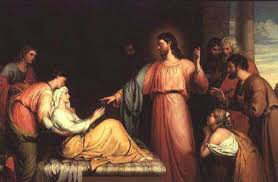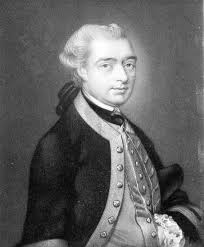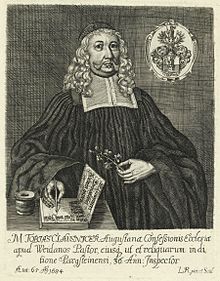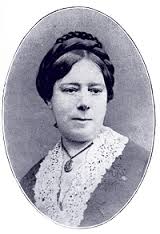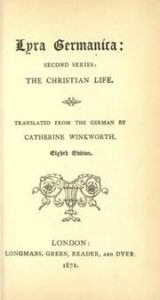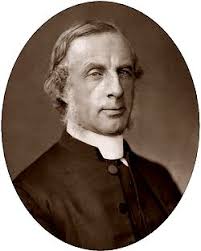Jesus healing Simon Peter’s mother-in-law
Mount Calvary Church
Eutaw Street and Madison Avenue
Baltimore, Maryland
A Parish of the Roman Catholic Personal Ordinariate of St. Peter
Anglican Use
Rev. Albert Scharbach, Pastor
Sexagesima Sunday
8:00 AM Said Mass
10:00 AM Sung Mass
Prelude
Liebster Jesu, wir sind hier, BWV 731, J.S. Bach
Hymns
Thou, whose almighty word
Blessed Jesus, at Thy word
Thine arm, O Lord, in days of old
Anthems
Out of the deep I call to Thee, Thomas Tallis
O sacrum convivium, Thomas Tallis
Postlude
Postlude in A major, Frantisek Walczynski
_____________________________________
Prelude
Liebster Jesu, wir sind hier, BWV 731, – J.S. Bach
Here is Jacques van Oortmerssen.
_____________________________
Hymns
Thou, whose almighty word
Thou whose almighty word was written by the Anglican clergyman John Marriott (1780-1825). It is a call to mission, reminding us that the essence of the Church is mission, to bring light to the world. At the beginning, God said “Let there be light,” and now in our time the Father again through his Word lets the light of the Gospel shine into the chaos and darkness of the world. The hymn is also Trinitarian, reminding us that all three Persons bring light: the Father who through the word created the universe and recreates it through the Gospel; the Son, who comes like the rays of the rising sun, “with healing in his wings” (Malachi 4:2), with a light which heals diseased minds and gives light to the blind; the Spirit who at the beginning moved over the dark waters and who now broods over the darkness of the world to bring the light of Christ to the dark earth.
Formerly Christian countries are now mission lands, and are filled with darkness and error. Among us are those whose minds are sick with lies, whose minds are darkened, who are despairing and see no life beyond the grave. The Gospel brings life and hope because it shows that the chaos of the world is being transformed by the light of the Gospel of the Risen Lord.
Thou, whose almighty word
Chaos and darkness heard,
And took their flight
Hear us, we humbly pray,
And where the gospel-day
Sheds not its glorious ray,
Let there be light!Thou, who didst come to bring
On thy redeeming wing
Healing and sight,
Health to the sick in mind,
Sight to the inly blind,
O now, to all mankind
Let there be light!Spirit of truth and love,
Life-giving, holy Dove,
Speed forth thy flight;
Move on the water’s face,
Bearing the lamp of grace,
And in earth’s darkest place
Let there be light!Holy and blessèd Three,
Glorious Trinity,
Wisdom, Love, Might;
Boundless as ocean’s tide
Rolling in fullest pride,
Through the earth far and wide
Let there be light!
Here (with some feedback) is the International Choir of Notre-Dame Cathedral (CIC) of Ho Chi Minh-City (Vietnam) singing this hymn in opening of Pentecost Mass on June 3rd 2001. Here is a version for four clarinets. And here is the choir of the Norwich Cathedral.
John Marriott, M.A, son of E. Marriott, D.D., Rector of Cottesbach, near Lutterworth, was born at Cottesbach, in 1780, and educated at Rugby, and Christ Church, Oxford. He was the second of two who obtained honours in the schools in 1802, the first year in which there was a public examination for honours at Oxford. He was also Student of Christ Church, and for about two years a private tutor in the family of the Duke of Buccleuch. The Duke presented him to the Rectory of Church Lawford, Warwickshire. This he retained to his death, although his wife’s health compelled him to reside in Devonshire, where he was successively curate of St. Lawrence and other parishes in Exeter, and of Broadclyst, near Exeter, where he died March 31, 1825. (Hymnary)
Felice Giardini
The tune is MOSCOW, also known as ITALIAN HYMN, composed by Felice Giardini, (Turin, April 12, 1716 – Moscow, June 8, 1796), an Italian composer and violinist. Felice de Giardini (b. Turin, Italy, 1716; d. Moscow, Russia, 1796) composed ITALIAN HYMN in three parts for this text at the request of Selina Shirley, the famous evangelically minded Countess of Huntingdon. Giardini was living in London at the time and contributed this tune and three others to Martin Madan’s Collection of Psalm and Hymn Tunes (1769), published to benefit the Lock Hospital in London where Madan was chaplain.
Giardini achieved great musical fame throughout Europe, especially in England. He studied violin, harpsichord, voice, and composition in Milan and Turin; from 1748 to 1750 he conducted a very successful solo violin tour on the continent. He came to England in 1750 and for the next forty years lived in London, where he was a prominent violinist in several orchestras. Giardini also taught and composed operas and instrumental music. In 1784 he traveled to Italy, but when he returned to London in 1790, Giardini was no longer popular. His subsequent tour to Russia also failed, and he died there in poverty. (Hymnary)
_____________________________________________
Blessed Jesus, at Thy word
Blessed Jesus, at Thy Word was written by Tobias Clausnitzer (1619-1684) and translated by Catherine Winkworth (1827-1828). It has many themes beloved of Lutherans: the Word of God is Himself the power that gathers us together to hear Him; the Word by his teaching draws our hearts to love Him; the Spirit prays within us with unutterable groans; we trust in the promise of God’s Word, and are therefore consoled.
Tobias Clausnitzer (5. Februar 1619 in Thum; † 7. Mai 1684 in Weiden in der Oberpfalz) war ein deutscher lutherischer Geistlicher und Kirchenliederdichter. Clausnitzer wurde als Sohn eines Kärrners und Landfuhrmanns in Thum geboren. Er studierte ab 1642 Evangelische Theologie an der Universität Leipzig. Im Jahr 1644 wurde er Feldprediger in einem schwedischen Regiment. Nachdem er 1649 in Weiden auf Befehl des schwedischen Generals Wrangel die Feldpredigt zur Feier des Westfälischen Friedens hielt, wurde er dort Pfarrer und später auch kurpfälzischer Kirchenrat und Inspektor des gemeinschaftlichen Amtes Parkstein und Weiden. Er starb 1684 als Superintendent in Weiden. (Wikipedia)
Tobias Clausnitzer was born at Thum, near Annaberg, in Saxony, probably on Feb. 5,1619. After studying at various Universities, and finally at Leipzig (where he graduated M.A. in 1643), he was appointed, in 1644, chaplain to a Swedish regiment. In that capacity he preached the thanksgiving sermon in St. Thomas’s Church, Leipzig, on “Reminiscere” Sunday, 1645 (ii. Sunday in Lent) on the accession of Christina as Queen of Sweden; as also the thanksgiving sermon at the field service held by command of General Wrangel, at Weiden, in the Upper Palatine, on January 1, 1649, after the conclusion of the Peace of Westphalia. In 1649 he was appointed first pastor at Weiden, and remained there (being also appointed later a member of the Consistory, and inspector of the district,) till his death, on May 7, 1684. (Hymnary)
The German:
Liebster Jesu! wir sind hier,
Dich und dein Wort anzuhören.
Lenke Sinnen und Begier
Auf die süßen Himmelslehren:
Daß die Herzen von der Erden
Ganz zu dir gezogen werden.Unser Wissen und Verstand
Ist mit Finsterniß verhüllet,
Wo nicht deines Geistes Hand
Uns mit hellem Licht erfüllet:
Gutes denken, thun und dichten
Mußt du selbst in uns verrichten.O du Glanz der Herrlichkeit,
Licht vom Licht aus Gott geboren!
Mach uns allesamt bereit,
Öffne Herzen, Mund und Ohren:
Unser Bitten, Flehn und Singen
Laß, Herr Jesu, wohl gelingen.
Here is a charming version of the hymn by four siblings,
The translation by Catherine Winkworth (stanzas 1-3; unknown, stanza 4)
Blessed Jesus, at Thy word
We are gathered all to hear Thee;
Let our hearts and souls be stirred
Now to seek and love and fear Thee,
By Thy teachings, sweet and holy,
Drawn from earth to love Thee solely.All our knowledge, sense, and sight
Lie in deepest darkness shrouded
Till Thy Spirit breaks our night
With the beams of truth unclouded.
Thou alone to God canst win us;
Thou must work all good within us.Glorious Lord, Thyself impart,
Light of Light, from God proceeding;
Open Thou our ears and heart,
Help us by Thy Spirit’s pleading;
Hear the cry Thy people raises,
Hear and bless our prayers and praises!Father, Son, and Holy Ghost,
Praise to Thee and adoration!
Grant that we Thy Word may trust
And obtain true consolation
While we here below must wander,
Till we sing Thy praises yonder.
Here it is sung by a boy’s voice. Here by a choral group.
Catherine Winkworth (13 September 1827 – 1 July 1878) was born at 20 Ely Place, Holborn, on the edge of the City of London. She was the fourth daughter of Henry Winkworth, a silk merchant. In 1829, her family moved to Manchester, where her father had a silk mill. Winkworth lived most of her early life in this great city, engine of the Industrial Revolution. Winkworth studied under the Rev. William Gaskell, minister of Cross Street Chapel, and with Dr. James Martineau, both of them eminent British Unitarians. She subsequently moved with the family to Clifton, near Bristol. Her sister Susanna Winkworth (1820–1884) was also a translator, mainly of German devotional works.Winkworth translated biographies of two founders of sisterhoods for the poor and the sick: Life of Pastor Fliedner, 1861, and Life of Amelia Sieveking, 1863.
She is best known for bringing the German chorale tradition to English speakers with her numerous translations of church hymns, which were published in the Lyra Germanica.
She also worked for wider educational opportunities for girls and in promoting women’s rights, as the secretary of the Clifton Association for Higher Education for Women, and a supporter of the Clifton High School for Girls, where a school house is named after her, and a member of the Cheltenham Ladies’ College. She was likewise governor of the Red Maids’ School in Westbury-on-Trym in the city of Bristol.
According to the Encyclopedia of Britain by Bamber Gascoigne (1993), it was Catherine Winkworth who, learning of General Charles James Napier’s ruthless and unauthorised, but successful campaign to conquer the Indian province of Sindh, “remarked to her teacher that Napier’s despatch to the governor-general of India, after capturing Sindh, should have been Peccavi (Latin for ‘I have sinned’: a pun on ‘I have Sindh’). She sent her joke to the new humorous magazine Punch, which printed it on 18 May 1844. She was then sixteen years old. The Oxford Dictionary of Quotations attributes this to Winkworth, noting that it was attributed to her in Notes and Queries in May 1954.The pun has usually been credited to Napier.] The rumour’s persistence over the decades led to investigations in Calcutta archives, as well as comments by William Lee-Warner in 1917 and Lord Zetland, Secretary for India, in 1936.
Catherine Winkworth died suddenly of heart disease near Geneva on 1 July 1878 and was buried in Monnetier, in Upper Savoy. A monument to her memory was erected in Bristol Cathedral. She is commemorated as a hymn writer with John Mason Neale on the liturgical calendar of the Episcopal Church on 7 August.
The tune LIEBSTER JESU was composed by Johann Rudolf Ahle.
Johann Rudolph Ahle (1625 – 1673) was a German composer, organist, theorist, and Protestant church musician.
Ahle was born in Mühlhausen, Thuringia. While not much is known of his early musical training, he studied at the grammar school in Göttingen and then studied theology at the University of Erfurt from 1645 to 1649. In 1646 he became cantor at the Church of St. Andrew in Erfurt. In 1648 he published the Compendium per tenellis, a theoretical treatise on choral singing which was reprinted several times during his lifetime and for a last time 50 years later by his son Johann Georg (the last edition appeared in 1704).
In 1654 Ahle assumed the post of organist at the Church of St Blaise in Mühlhausen. The next year he married Anna Maria Wölfer; their son, Johann Georg Ahle (1651-1706), was also a well-known composer and organist. Johann Rudolph was elected a town councilman in Mühlhausen in the 1650s, and was elected mayor shortly before his death in 1673. His immediate successor at St. Blasen/Blasius was his son Johann Georg, and then briefly Johann Sebastian Bach, who was in Mühlhausen in 1707/08.
Much of his compositional output consists of sacred choral and vocal works, instrumental music, and organ music. He is best known for motets and sacred concertos (most of them in German, some in Latin) contained in Neu-gepflanzte Thüringische Lust-Garten, in welchem… Neue Geistliche Musicalische Gewaechse mit 3, 4, 5, 6, 7, 8, 10 und mehr Stimmen auf unterschiedliche Arten mit und ohne Instrument … versetzet (1657–65). He is also known for hymn melodies, of which three remain in the Evangelical Hymn Book. (Wikipedia)
Except for his collection of dances of 1650, Ahle’s large output of music consists entirely of sacred vocal works. On the whole it is interesting not because it is original but because it is typical of the music written for the Protestant Church in Thuringia and Saxony during the third quarter of the 17th century. Moreover, since Ahle and his son were the immediate predecessors of the young J.S. Bach, who as his first employment held the same position as they did at St Blasius, the state of music under them provides at least a few clues to some of the early influences on J.S. Bach’s style. Ahle was probably influenced by Michael Altenburg and especially by Hammerschmidt, who, though belonging to the generation of Heinrich Schütz, wrote simpler and more popular church music. He cultivated the simple style of the chorale, avoiding polyphonic counterpoint. Certainly the tendency towards popularization characterizes almost all of Ahle’s output. His tunes were for long very popular, and are still sung in the Protestant churches of Thuringia – amongst others that known as Liebster Jesu, wir sind hier. (Bach Cantata Website)
The tune is of surpassing sweetness; J. S. Bach used it in a cantata (BWV 373) and six choral preludes. Here is the cantata with choral prelude BWV 633, 634, etc. Here is a charming version of teh hymn by four siblings – Bach would have loved it.
Here is Albert Schweitzer in 1937 playing BWV 731 on the organ of the Église Sainte-Aurélie in Strasbourg (with an unusual video). And there are that and other preludes in unusual versions Here is Alicia de Laroccha (ah, I remember hearing her when we were both young). Here a lively version for piano and percussion. Here we have it on the flute and organ in Brazil. Here on four cellos. Here on guitar (rather nice). Here for a Japanese recorder ensemble. Here are the Swingle Singers. Here for saxophone, cello, and piano. Yes, here for accordion.
It is a lovely prelude, but I am astonished at how it has captured the popular imagination all over the world, really becoming a part of pop culture, like Durer’s Hands.
______________________________________________
Thine arm, O Lord, in days of old
Thine arm, O Lord, in days of old was written by Edward Hayes Plumptre (1821-1891), who wrote it for King’s College Hospital. It is a hymn for the sick, whether in body in mind. Unlike much Victorian writing about sickness, the hymn avoids mawkishness and strikes a positive note, with words such as ‘strong’, ‘calmed’, ‘almighty’, ‘deliverer’ and ‘soothe’ stressing both the power and gentleness of God. Like several of Plumptre’s other hymns, it achieves a strong sense of inclusiveness. The first verse describes the sick, with their various afflictions, coming together to seek healing from Jesus. The second verse draws in both those who are able to go about their business and the bedridden, ‘in crowded street, by restless couch’ and links them to those healed in the past ‘by Gennesareth’s shore’. In the third verse, both the healers and the sick ask for God’s help and support and take part together in praising him. This breadth of vision gives the hymn a strength which has ensured its enduring value. We should sing it especially for the sick of our congregation and thsoe in Joseph Richey Hospice, because jsus triumphs “o’er disease and death/ O’er darkness and the grave.”
In the original text, there was a penultimate verse emphasizing that miracles no longer happen, and healing takes place through scientific knowledge. This verse is generally dropped, but otherwise the hymn has not been much altered.
1 Thine arm, O Lord, in days of old
Was strong to heal and save;
It triumphed o’er disease and death,
O’er darkness and the grave.
To Thee they went, the blind, the deaf,
The palsied, and the lame,
The leper with his tainted life,
The sick with fevered frame.
2 And lo! Thy touch brought life and health,
Gave speech, and strength, and sight;
And youth renewed and frenzy calmed
Owned Thee, the Lord of light:
And now, O Lord, be near to bless,
Almighty as of yore,
In crowded street, by restless couch,
As by Gennesareth’s shore.
(3 Though love and might no longer heal
By touch, or word, or look;
Though they who do Thy work must read
Thy laws in nature’s book:
Yet come to heal the sick man’s soul
Come, cleanse the leprous taint;
Give joy and peace, where all is strife,
And strength, where all is faint.)
4 Be Thou our great deliverer still,
Thou Lord of life and death,
Restore and quicken, soothe and bless,
With thine almighty breath.
To hands that work and eyes that see,
Give wisdom’s heavenly lore,
That whole and sick, and weak and strong,
May praise Thee evermore,
Edward Hayes Plumptre
Edward Hayes Plumptre, D.D., was born in London, 1821, and educated at King’s College, London, and University College, Oxford, graduating as a double first in 1844. He was for some time Fellow of Brasenose. On taking Holy Orders in 1846 he rapidly attained to a foremost position as a Theologian and Preacher. His appointments have been important and influential, and include that of Assistant Preacher at Lincoln’s Inn; Select Preacher at Oxford; Professor of Pastoral Theology at King’s College, London; Dean of Queen’s, Oxford; Prebendary in St. Paul’s Cathedral, London; Professor of Exegesis of the New Testament in King’s College, London; Boyle Lecturer; Grinfield Lecturer on the Septuagint, Oxford; Examiner in the Theological schools at Oxford; Member of the Old Testament Company for the Revision of the A.V. of the Holy Scriptures; Rector of Pluckley, 1869; Vicar of Bickley, Kent, 1873; and Dean of Wells, 1881.
Dean Plumptre’s literary productions have been very numerous and important, and embrace the classics, history, divinity, biblical criticism, biography, and poetry. The list as set forth in Crockford’s Clerical Directory is very extensive. His poetical works include Lazarus, and Other Poems, 1864; Master and Scholar, 1866; Things New and Old, 1884; and translations of Sophocles, Æschylus, and Dante. As a writer of sacred poetry he ranks very high. His hymns are elegant in style, fervent in spirit, and broad in treatment. The subjects chosen are mainly those associated with the revived Church life of the present day, from the Processional at a Choral Festival to hospital work and the spiritual life in schools and colleges. The rhythm of his verse has a special attraction for musicians, its poetry for the cultured, and its stately simplicity for the devout and earnest-minded. The two which have attained to the most extensive use in Great Britain and America are: Rejoice, ye pure in heart,” and “Thine arm, O Lord, in days of old.” His translations from the Latin, many of which were made for the Hymnary, 1871 and 1872, are very good and musical, but they have not been used in any way in proportion to their merits.
The tune ST MATTHEW is attributed to William Croft, who was born in the year 1677 and received his musical education in the Chapel Royal, under Dr. Blow. In 1700 he was admitted a Gentleman Extraordinary of the Chapel Boyd; and in 1707, upon the decease of Jeremiah Clarke, he was appointed joint organist with his mentor, Dr. Blow. In 1709 he was elected organist of Westminster Abbey. This amiable man and excellent musician died in 1727, in the fiftieth year of his age. A very large number of Dr. Croft’s compositions remain still in manuscript.
_______________________________________________
Anthems
Out of the deep I call to Thee, Thomas Tallis
Out from the deep I call to thee, O Lord hear my invocation. Thine ears bow down; incline to me and hear my lamentation. For if thou wilt our sins behold, that we have done from time to tide, O Lord, who then dare be so bold as in thy sight for to abide.
Here is the Chapelle du Roi.
_________________________
O sacrum convivium, Thomas Tallis
O sacrum convivium, in quo Christus sumitur, recolitur memoria passionis eius, mens impletur gratia, et futurae gloriae nobis pignus datur.
Here is St. George’s Windsor.
________________________________
Postlude
Postlude in A major, Frantisek Walczynski
